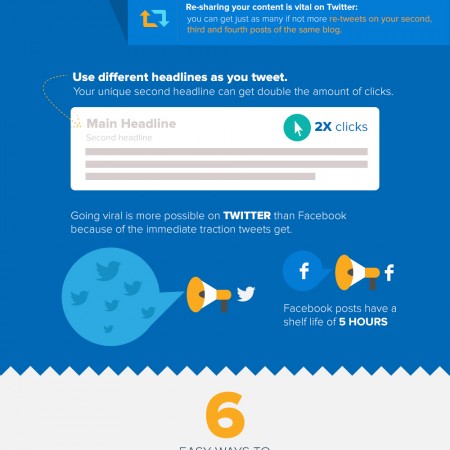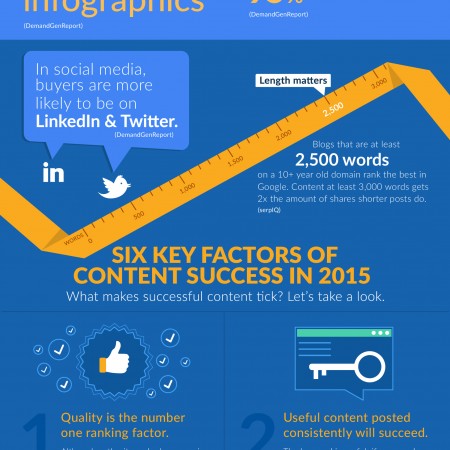How to Repurpose Your Content Correctly (Infographic)
In our infographic below, we’re exploring why you should repurpose content, why Twitter should be a major focus, and six easy ways to repurpose content. Plus, four killer tools you can use. Get started on awesome content re-purposing right away! Don’t forget to share if you’ve found our infographic helpful! How to Repurpose Content: An Infographic Like this infographic? Get more tips from Express Writers. Embed this infographic on your own site Copy and paste this code into your blog post or web page: <br /> <a href=”https://staging.expresswriters.com/how-to-repurpose-your-content-correctly-infographic”><img title=”How” src=”https://staging.expresswriters.com/wp-content/uploads/2015/06/Infographic.jpg” alt=”How” width=”1000″” height=”7007″ /></a><br /> <small>Like this infographic? Get more tips from <a href=”https://staging.expresswriters.com/”>Express Writers</a>.</small> Transcript Why Should You Repurpose Content? Approximately 15% of Americans listen to podcasts of repurposed content, and the number is growing each year. Tweets with visual content get 18% more clicks, 89% more favorites, and 150% more re-tweets. Repurposed content helps make your content more impactful as 67% of people are likely to be convinced by a presentation that includes visuals. An infographic is 30 times more likely to help you get views than an article. Kissmetric’s infographics received an average of 20,859 likes on Facebook. An average of 62% of podcast listeners surveyed have said they are likely to buy something advertised on a podcast. 70% of many major businesses say videos are a highly effective aspect of their content marketing. Why Twitter Should Be A Focus For Your Repurposed Content Studies show that you’ll get the most use out of Twitter if you tweet up to 30x a day, while small business owners do better around 5 tweets/day. (Kevan Lee) A tweet usually has a “life” of 18 minutes. That’s why you want to tweet often: the more you tweet, the more you will see engagement. (Kevan Lee) Link to your blogs and content, often: 50% of all re-tweeted tweets contain links. (Leo Widrich) Re-sharing your content is vital on Twitter: you can get just as many if not more re-tweets on your second, third and fourth posts of the same blog. (Belle Beth Cooper) Use different headlines as you tweet. Your unique second headline can get double the amount of clicks. (Leo Widrich) Going viral is more possible on Twitter than Facebook because of the immediate traction tweets get. Facebook posts have a shelf life of 5 hours. (Leo Widrich) 6 EASY Ways to Repurpose Content Make a Presentation. Turn your blog post into a presentation on SlideShare. Make a few graphics and put them into the program, and you have new, repurposed content. (Kevan Lee) Turn Old Blog Posts Into Guides. Old blog posts provide a lot of excellent content to be repurposed. Assemble the multiple blogs you’ve written on a topic and turn them into an easy-to-access guide with multiple aspects. (Megan Marrs) Use Your Evergreen Content. One of the best types of content to repurpose is evergreen content. This gives you more topics to work with, and helps you create something that will still be worthwhile in the future. (Kevan Lee) Create Infographics from Written Content. Do you have a favorite blog that you want more people to read? Consider chopping it down into short points and putting them in infographic form. (Arnie Kuenn) Host a Podcast Based Off of a Blog Post. Podcasts are a hot commodity right now, and your written content provides some great resources for one (or several). Look at your popular posts and then host a podcast talking more in-depth on them. (Megan Marrs) Turn Your Content into Powerful Videos. Your existing written content can be used as visual in multiple ways, including video. Brand videos made from content you already have can reach more people and bring in new customers. (Salma Jafri) 4 Great Tools For Repurposing Content SlideShare. This is a great tool to add your visual content to, creating a presentation you can give out to your clients. Try it when repurposing your content for maximum audience reach. (Garrett Moon) YouTube. This is the best channel to share your videos on to reach out to a wide audience. When you repurpose written content into videos, always make sure you have a YouTube channel set up for them. (Garrett Moon) Social Media Channels. Every single social media channel offers you the chance to repurpose content whether it is on Twitter, Pinterest, or Instagram. Research different ones to find which will benefit your business the most. (Yael Kochman) List.ly. Lists are amazing, aren’t they? People love lists, which makes this program excellent to use for your repurposed content. Simply break your content down into a list format, update this program, and share with your audience. (Yael Kochman) Full Reference List Kevan Lee, Buffer | http://buff.ly/1eEKhlQ CityRoom | http://buff.ly/1eEKfdY Wordstream | http://buff.ly/1dclaVS Hubspot | http://buff.ly/1eEKjKv Inc.com, Larry Kim | http://buff.ly/1eEKplj Brafton | http://buff.ly/1eEKwxu Salma Jafri, Search Engine Watch | http://buff.ly/1eEKzt8 Arnie Kuenn, CMI | http://buff.ly/1eEKGVy Coschedule | http://buff.ly/1eEKJR9 Outbrain | http://buff.ly/1eEKKVc

